25 Essentially Effortless Ways to Make Your Flight Day Stress-Free
Flying should be exciting—an adventure that kicks off the moment you leave home. But for many travelers, flight day feels more like a high-stress obstacle course. Between unpredictable airport crowds, security bottlenecks, last-minute gate changes, and the pressure to remember a million details, it's easy to lose the joy of travel before the plane even takes off. The good news? It doesn't have to be this way. With a little foresight and the right strategy, your travel day can shift from rushed and chaotic to calm, efficient, and—dare we say it—enjoyable. Whether you're a first-time flyer or a frequent flier looking to optimize your routine, having a smart, step-by-step plan can make all the difference. We’ve expanded our guide to include 25 key tips that walk you through an ideal flight day—from the moment you wake up to the second you step off the plane at your destination. These aren’t just basic packing reminders. We’re diving into clever hacks, timing tricks, and thoughtful habits that reduce stress, save time, and boost comfort. So buckle up—this is your blueprint for a smoother, smarter, and more enjoyable travel experience. Let’s take off stress-free!
1. Start Your Flight Day the Right Way

How you begin your day sets the tone for the entire journey. Instead of hitting the snooze button, give yourself plenty of time so you're not rushing. A relaxed start will help you feel more in control and reduce last-minute stress. Eat a light, healthy breakfast—something that won’t leave you sluggish but will keep your energy levels up, like yogurt, fruit, or eggs. Hydration is key, so start drinking water early to counteract the dry air of airplane cabins. If you didn’t check in the night before, do it now and confirm your flight status. A few extra minutes of preparation in the morning can mean the difference between a smooth, enjoyable travel day and one that feels rushed and chaotic. Bonus tip: Before leaving the house, double-check your essentials—passport, wallet, and boarding pass—to avoid that "Did I forget something?" panic.
2. Pack Smart (and Light!)
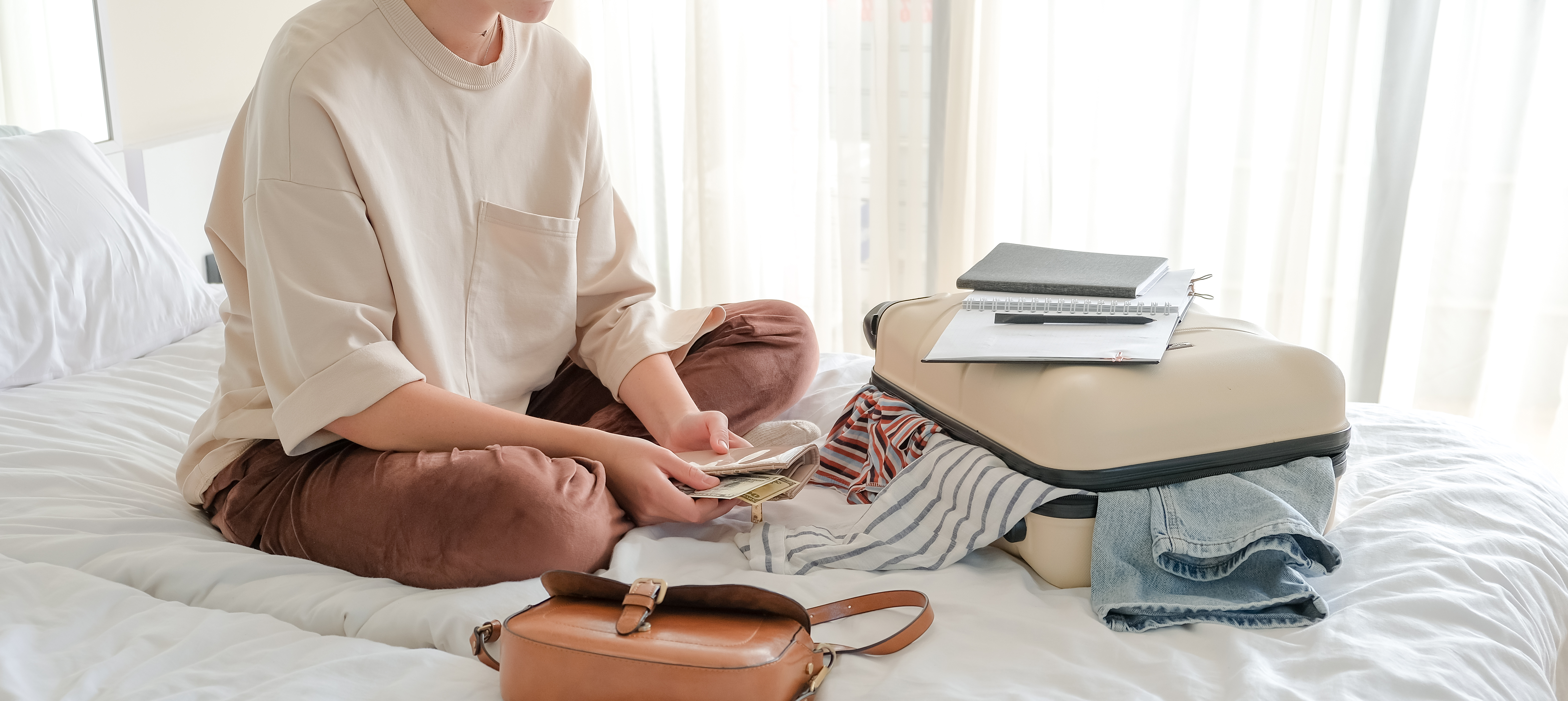
A well-organized bag can make all the difference in reducing stress on travel day. Keep all travel documents in an easily accessible pouch so you’re not searching for your passport at the worst moment. Essentials like medications, chargers, a book, and a reusable water bottle should go in your carry-on. If you’re bringing snacks, opt for something non-messy like granola bars or nuts. Packing cubes help keep your luggage neat, and rolling your clothes instead of folding can save space. If you’re checking a bag, make sure you have at least one change of clothes in your carry-on, just in case. The lighter you pack, the easier your journey will be, so be honest with yourself about what you really need. Bonus tip: Wear layers instead of bringing a bulky jacket. Airplane temperatures fluctuate, and you’ll stay more comfortable adjusting as needed.
3. Get to the Airport Early (But Not Too Early)
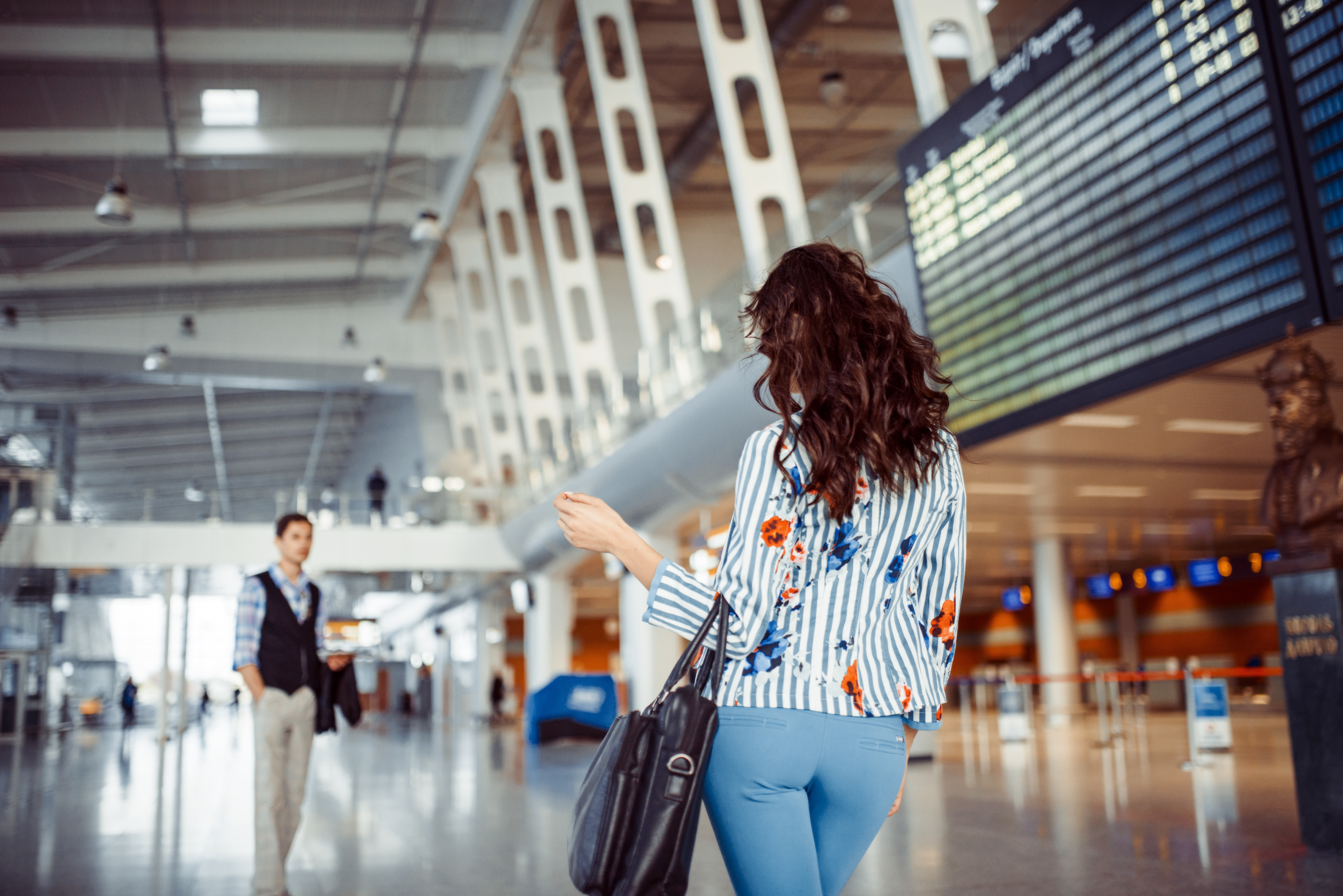
You don’t want to be running through the terminal, but you also don’t want to sit at the gate for hours feeling exhausted before you even board. The sweet spot is about two hours before a domestic flight and three hours for international travel. Check live traffic updates before leaving the house so you can adjust your departure time if needed. If you’re relying on public transportation, confirm schedules ahead of time. Arriving too early just means extra waiting around, so if you have time to spare, enjoy a coffee or explore the airport rather than sitting at the gate for hours. Bonus tip: Use your airline’s mobile app for check-in, digital boarding passes, and real-time flight updates. This way, you’re not dependent on airport screens.
4. Breeze Through Security Like a Pro
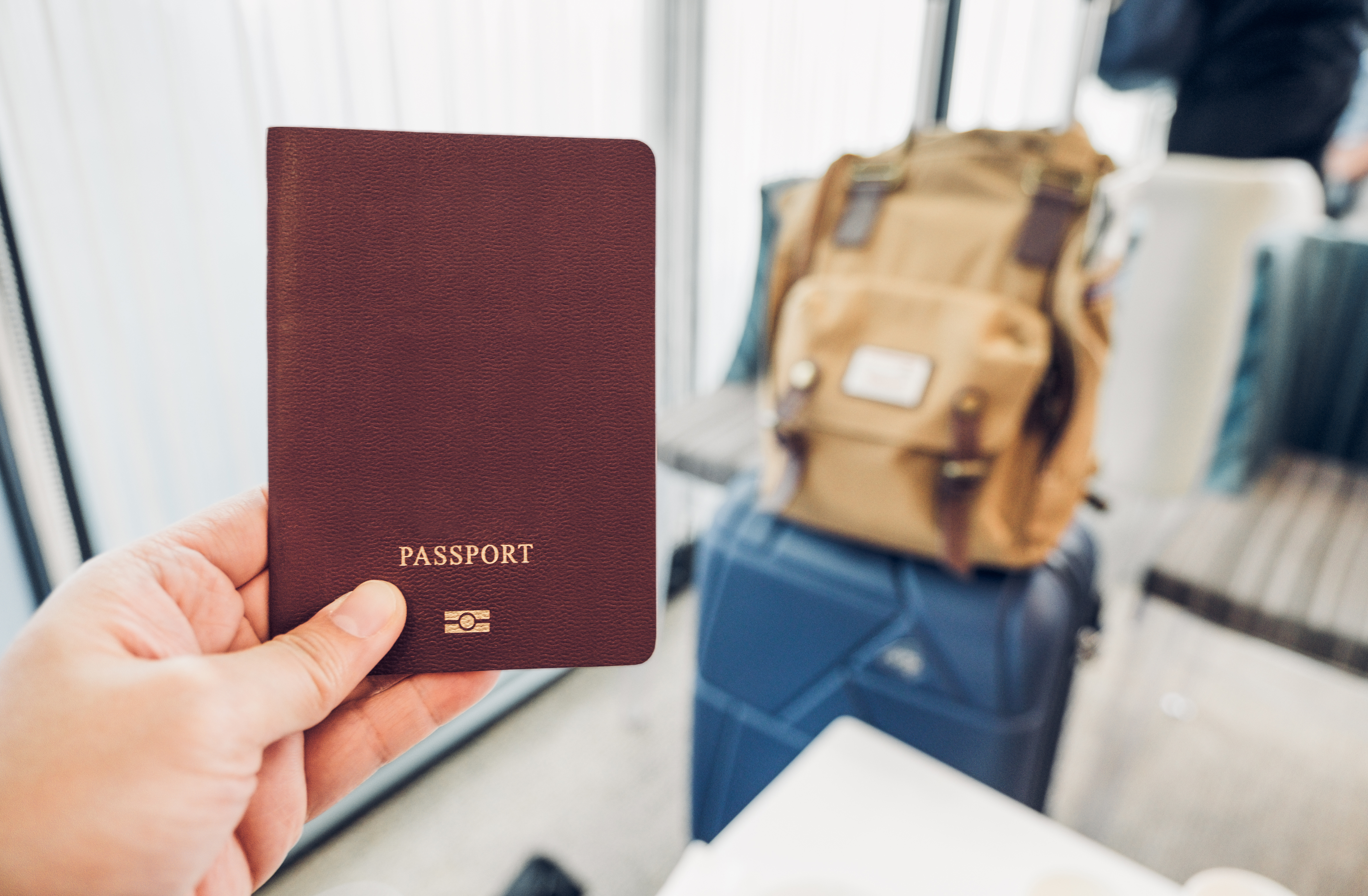
Airport security doesn’t have to be a stressful bottleneck in your journey. If you’re prepared, you can get through in minutes. Before stepping into line, remove any metal objects and put your phone and wallet in your bag. Keep your laptop and liquids at the top of your carry-on so they’re easy to access. If you’re wearing shoes with laces, consider slip-ons instead to speed up the process. Travelers with TSA PreCheck or Global Entry can bypass long lines and keep their shoes and belts on, which is a game-changer if you travel frequently. Bonus tip: Avoid the first security checkpoint you see. Walk a little further, and you’ll often find shorter lines.
5. Take Advantage of Airport Amenities
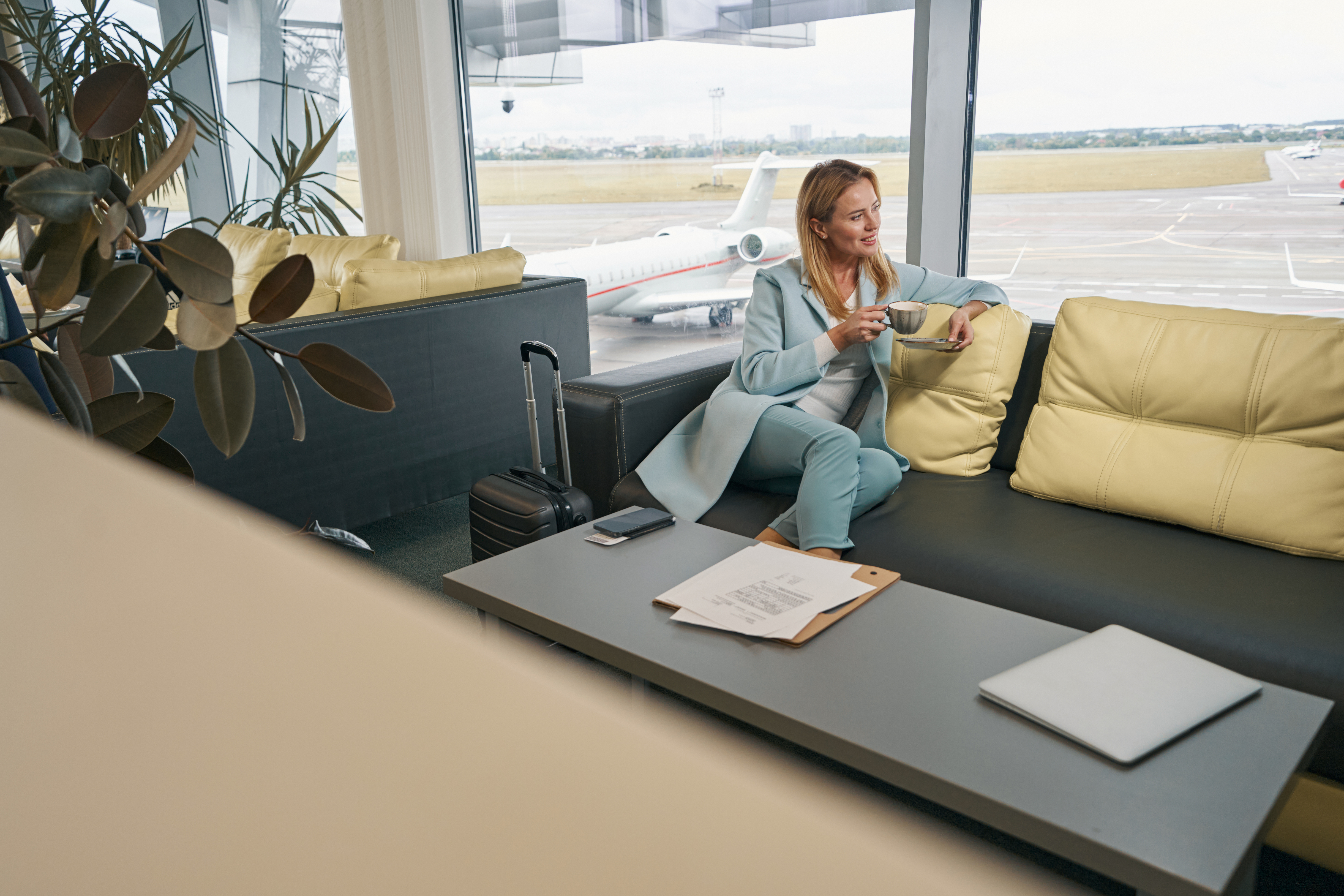
Airports are becoming more than just a place to wait for your flight—they now offer experiences. If you have time before boarding, check if your airport has a lounge, even if you’re not flying first class. Many offer day passes that give you access to quiet seating, free food, and clean restrooms. If you prefer to explore, some airports feature local restaurants, art exhibits, and even yoga rooms. If all else fails, grab a seat with a good view and watch the planes take off. Bonus tip: If your gate is packed and stressful, walk to a nearby, emptier gate—it’s usually quieter and more comfortable.
6. Board Calmly, Not in a Frenzy
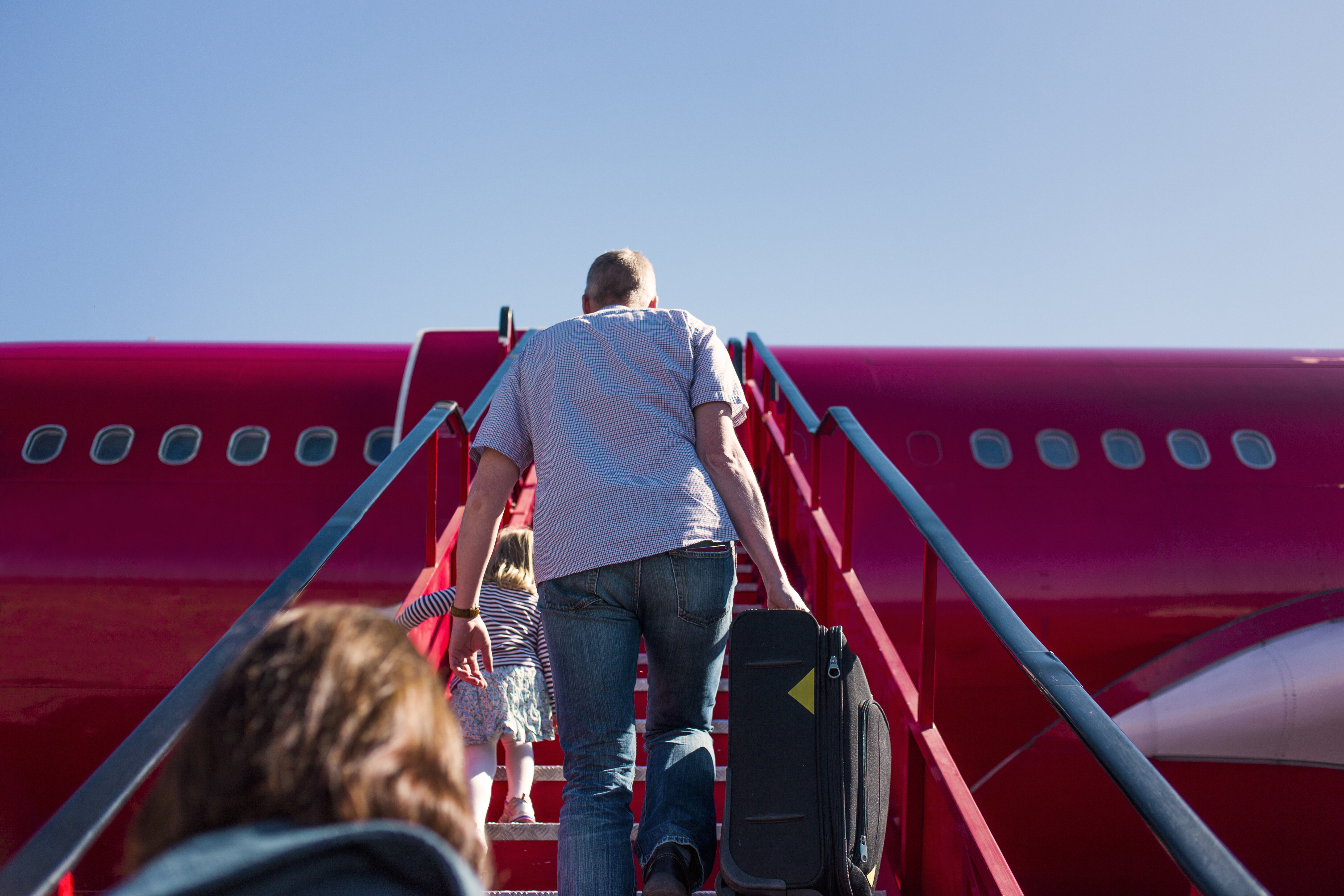
Many travelers rush to board, but there’s no need to crowd the gate as soon as they call pre-boarding. Instead, use that time to relax, check your essentials, or use the restroom one last time. When your group is called, have your boarding pass and ID ready so you’re not fumbling at the last second. If you have a roller bag and overhead space is limited, it can help to board earlier within your group, but otherwise, there’s no need to rush. If you’re in an aisle seat, boarding later can save you from getting up multiple times for other passengers. Bonus tip: Store a small essentials bag (earphones, phone, book) under your seat so you don’t have to keep getting up to access your overhead luggage.
7. Get Comfortable In-Flight
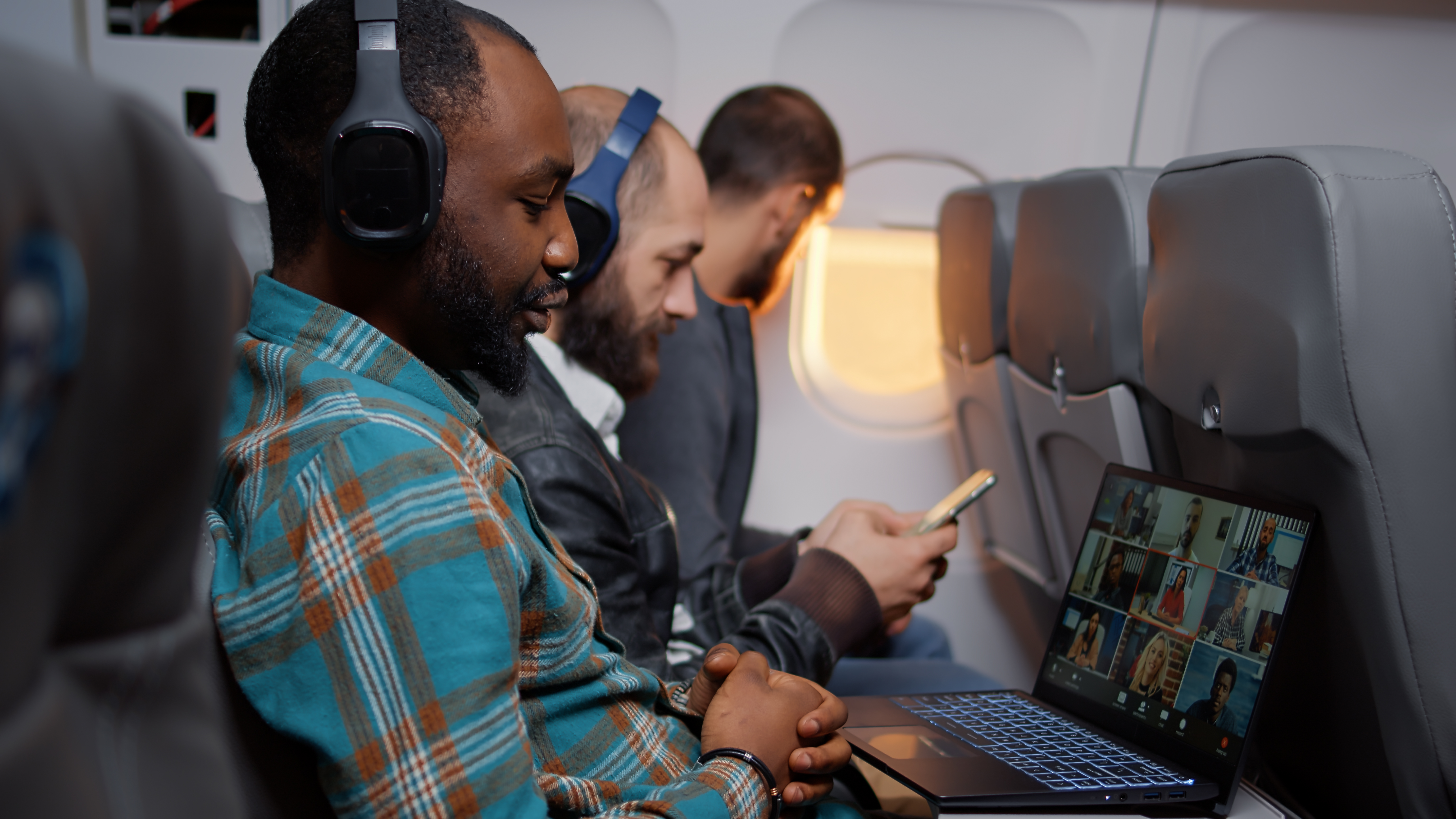
Long flights can be tiring, so make sure you have everything you need for a comfortable journey. Adjust your seatbelt for comfort, use a neck pillow for support, and wear an eye mask if you plan to nap. Airplane cabins can be dry, so use lip balm and moisturizer to stay comfortable. Noise-canceling headphones or earplugs can make a big difference in blocking out distractions. If the plane is not full, politely ask a flight attendant if you can move to an emptier row for extra space. Bonus tip: Bring a lightweight scarf or blanket—airplane cabins often get colder than expected.
8. Stay Hydrated & Snack Smart
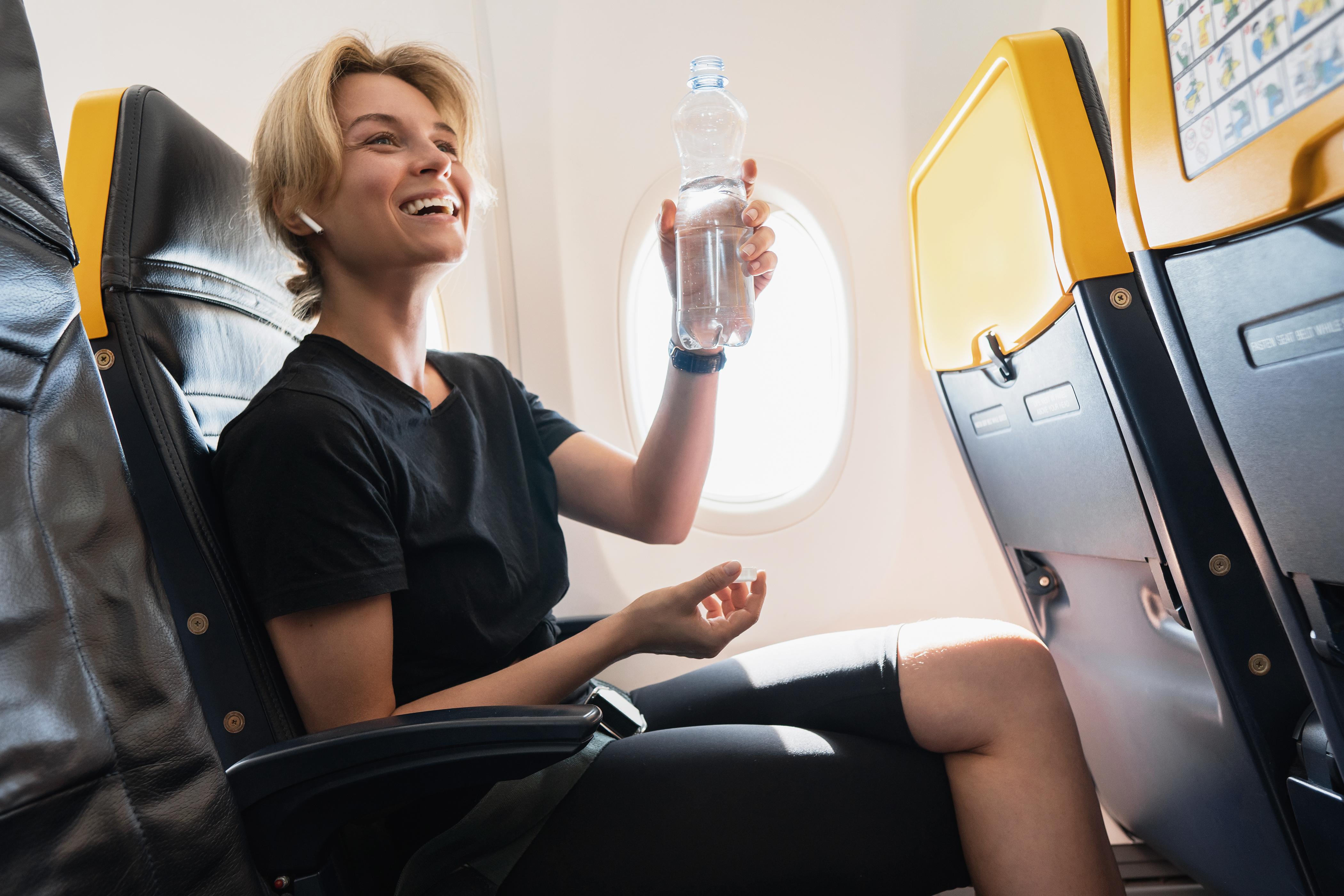
Flying can leave you feeling dehydrated and sluggish, so drink water regularly. Bring a refillable water bottle and fill it up after security to avoid relying on tiny in-flight cups. Avoid excessive caffeine and alcohol, as they can make jet lag worse. Pack your own snacks so you’re not stuck with overpriced airport food or limited in-flight options. Protein-rich snacks like nuts or protein bars will keep you feeling full longer. Bonus tip: If you have dietary restrictions, order a special meal from your airline in advance—these are often fresher and served first.
9. Move Around to Avoid Stiffness
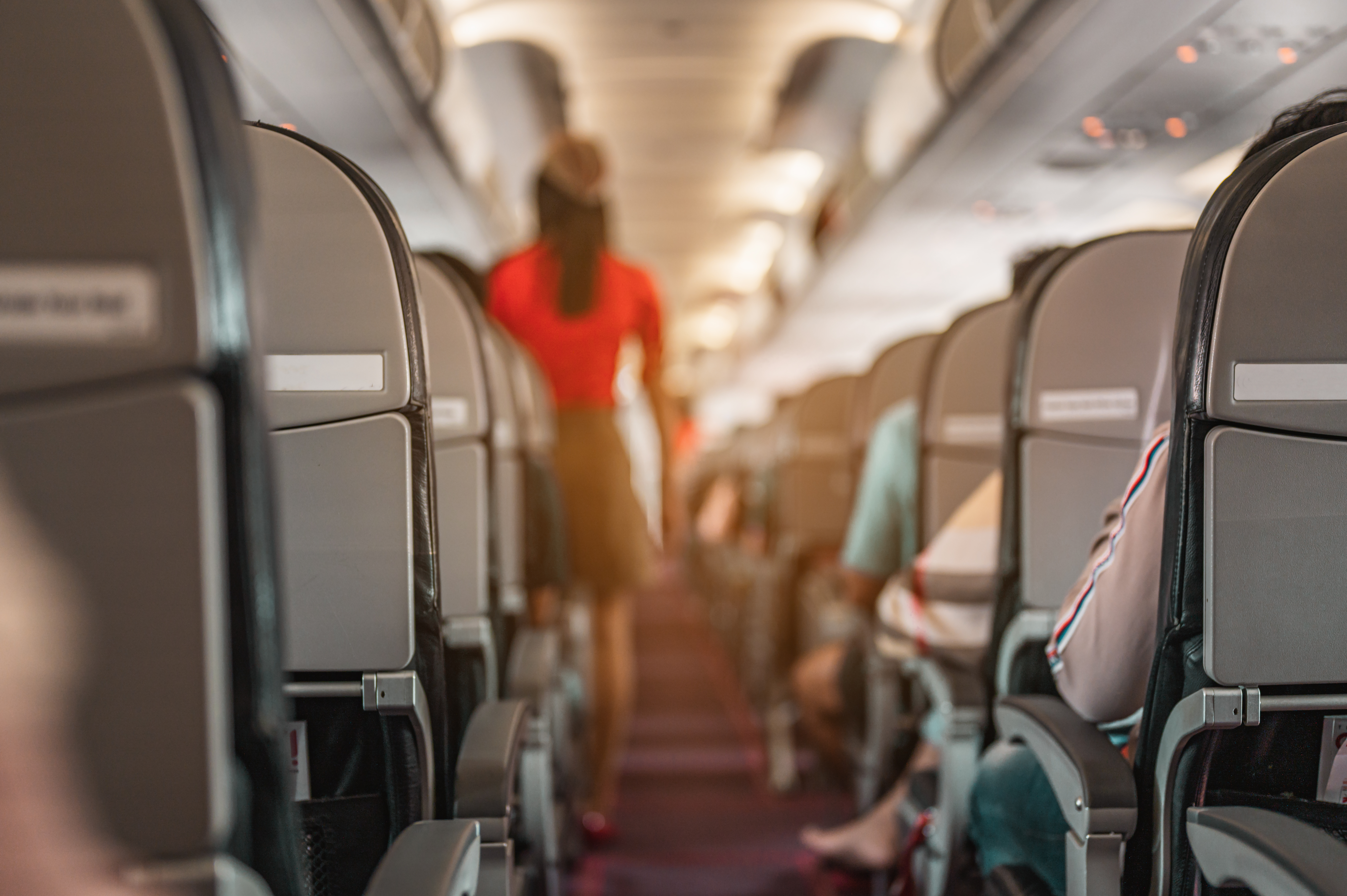
Sitting in one position for hours can leave you feeling stiff, sluggish, and uncomfortable—especially on long-haul flights. Staying in one spot for too long can also increase the risk of swelling in your feet and legs, or even deep vein thrombosis (DVT), a condition where blood clots form due to prolonged immobility. To keep your circulation flowing, make a habit of getting up every couple of hours to walk up and down the aisle, stretch your arms and legs, and gently roll your shoulders. If you’re in a cramped seat or have limited mobility, even simple in-seat stretches can help. Try flexing and pointing your toes, rolling your ankles, or gently twisting your torso to keep your muscles engaged. Compression socks are also a great investment for long flights, as they improve blood flow and prevent swelling in your lower legs. Bonus tip: If you’re in a window seat and don’t want to disturb your row often, do seated exercises like calf raises, knee lifts, or foot circles. Even small movements make a big difference in preventing stiffness and discomfort.
10. Combat Jet Lag Before Landing

Jet lag can be a real struggle, but you can ease the transition by adjusting your body’s internal clock before you even land. One of the best tricks is to set your watch (or phone) to your destination’s time zone as soon as you board. This small mental shift can help you start syncing with the new schedule before arrival. Try to align your sleep patterns with your destination’s time—if it’s nighttime where you’re headed, attempt to rest, even if it’s the middle of the day in your departure city. Noise-canceling headphones, an eye mask, and a neck pillow can all help create a more sleep-friendly environment on board. When you arrive, resist the urge to nap if it’s daytime. Instead, spend as much time outside as possible—natural sunlight is one of the most effective ways to reset your circadian rhythm. If you land in the evening, keep your lights dim and avoid screens to encourage melatonin production, which will help you fall asleep faster. Staying hydrated, eating light, and avoiding excessive caffeine and alcohol will also help your body adjust more smoothly. Bonus tip: If you're landing in the morning, avoid naps and push through until the local bedtime—it’s the fastest way to get on schedule and minimize jet lag.
11. Prepare for a Smooth Landing
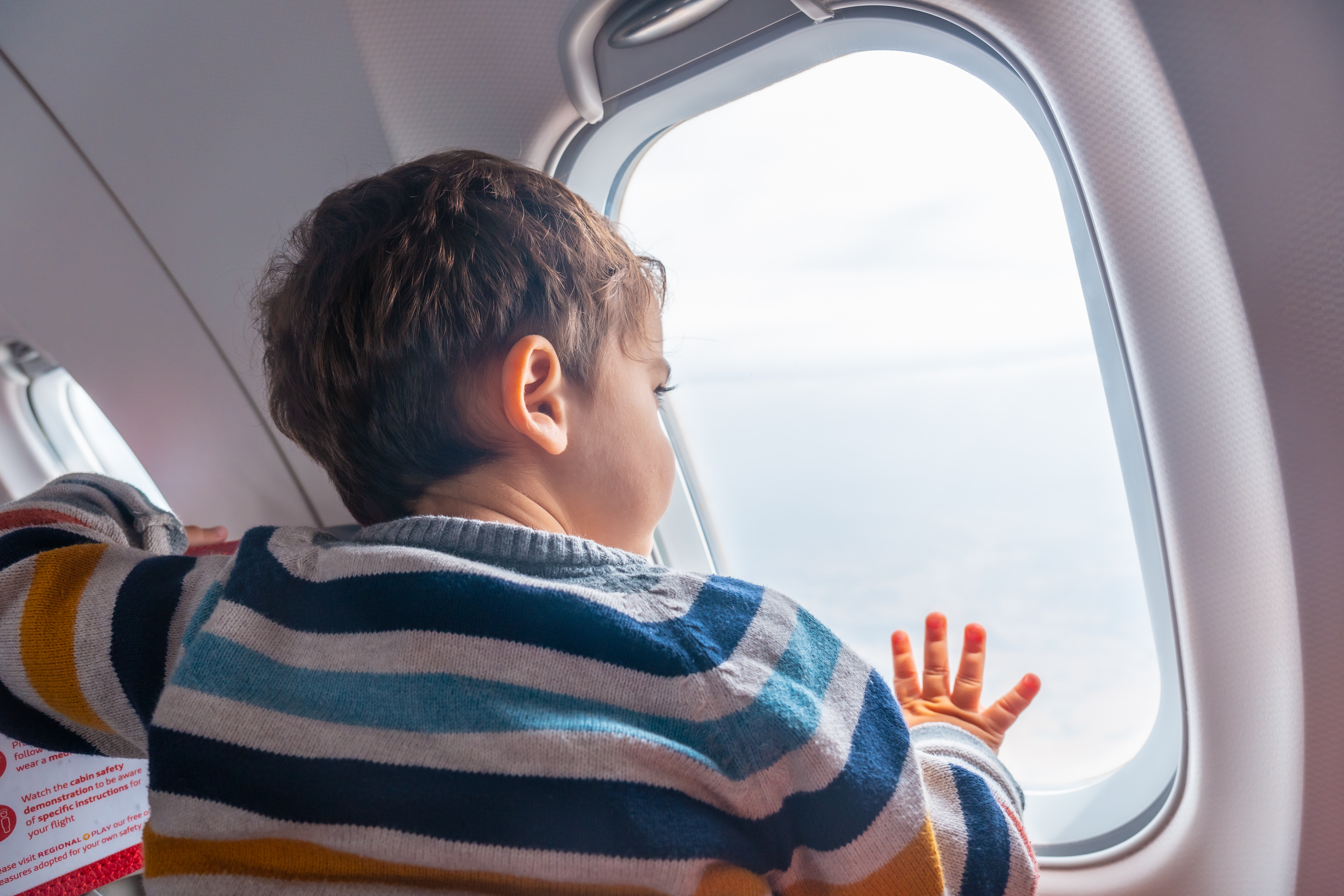
The descent can be a hectic time, especially if you’re scrambling to gather your things or worried about a tight connection. To make the transition smoother, start organizing your belongings about 30 minutes before landing. Put away anything you won’t need immediately, keep your passport and documents handy, and make sure your electronics and chargers are easily accessible in case you need them. If you’re on a long-haul flight, freshening up with a face wipe or brushing your teeth can also help you feel more awake and ready to go. Use the restroom before the seatbelt sign comes on—lines get long just before landing, and you don’t want to spend extra time waiting after a long flight. If you’re worried about making a tight connection, inform a flight attendant early. In some cases, they may be able to arrange priority disembarkation for you. If you're checking a bag, identifying it quickly at baggage claim can save time, so use a brightly colored luggage tag, ribbon, or even a unique sticker to make it stand out from the crowd. Bonus tip: Take a quick photo of your luggage before checking it in—if it goes missing, it’s much easier to describe to airline staff.
12. Get Through Customs & Baggage Claim Fast
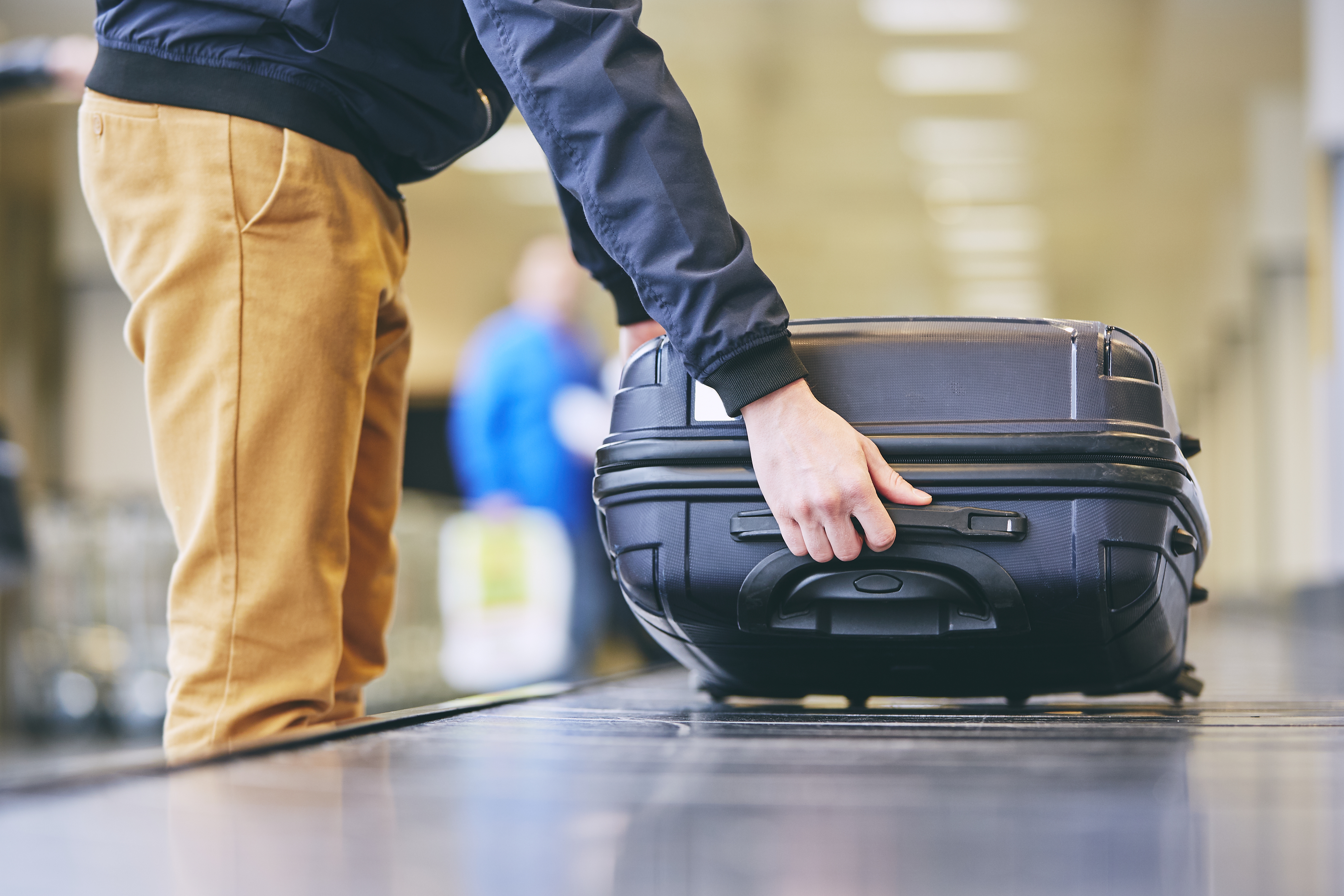
After a long flight, the last thing you want is to be stuck in long lines at customs or baggage claim. For international travel, speed things up by filling out any necessary entry forms before landing and having your passport and travel documents ready. Some airports offer electronic passport control kiosks that can make the process faster—check ahead to see if your arrival airport has them. If you have Global Entry, TSA PreCheck, or a similar fast-track program, make sure you know where to go for expedited processing. Once through immigration, head straight to baggage claim. The sooner you get there, the faster you can grab your bag before the crowds gather. While waiting, check where ride-share pickups, taxis, or public transportation stops are located so you’re not scrambling once you have your luggage. If your bags don’t arrive, report it immediately to the airline’s baggage service desk before leaving the airport. Having a photo of your suitcase and a copy of your baggage claim receipt can make the lost luggage process smoother. Bonus tip: Use an Apple AirTag or Tile tracker in your checked bag so you can track its location if it gets delayed or lost.
13. Have a Backup Plan for Delays
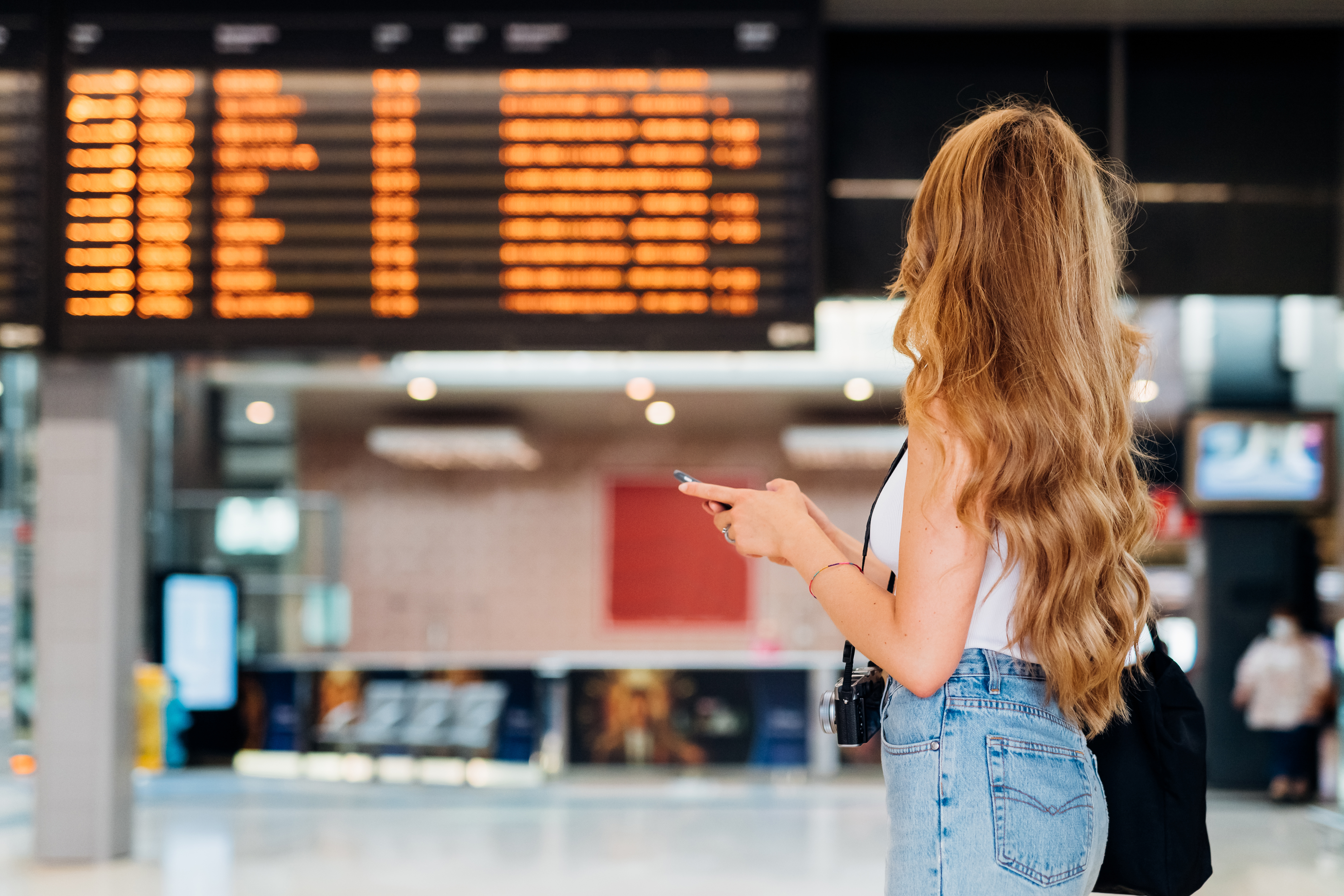
Flight delays are frustrating, but they don’t have to derail your trip if you’re prepared. Before heading to the airport, check the weather at both your departure and arrival cities—bad weather is one of the most common causes of flight disruptions. Download your airline’s app for real-time updates, gate changes, and rebooking options in case of delays or cancellations. If your flight is significantly delayed, know your rights—some airlines offer meal vouchers, hotel stays, or compensation for long delays, especially for international flights. If you need to rebook a canceled flight, try calling the airline’s customer service instead of waiting in long airport lines. In many cases, calling the airline’s international customer service number (instead of the main U.S. or local line) can get you through faster. If your delay means missing a connection, research alternative routes or nearby airports that might have available flights. Having a backup plan for transportation and accommodation at your destination can also make unexpected delays less stressful. Bonus tip: Pack a portable charger so you’re not left with a dead phone when you need it most.
14. Know Your Rights as a Passenger

Many travelers don’t realize they have rights when a flight is delayed, canceled, or overbooked. If your flight is significantly delayed or canceled due to reasons within the airline’s control (like staffing issues or maintenance problems), you may be entitled to compensation, rebooking on another airline, or meal and hotel vouchers. In the U.S., airlines must compensate passengers if they’re involuntarily bumped from a flight due to overbooking. In Europe, under EU Regulation 261, you could be entitled to up to €600 in compensation for long delays or cancellations. Before accepting vouchers, always ask about your options—cash compensation is usually better than airline credit, which may have restrictions. If your flight is canceled, airlines must offer you either a full refund or an alternative flight. Keeping copies of your receipts and flight details can also help if you need to file a claim later. Bonus tip: If an airline denies you compensation for a delay or cancellation, check passenger rights websites like AirHelp or the Department of Transportation to see what you're owed.
15. Stay Flexible and Enjoy the Journey

Even with the best planning, travel doesn’t always go as expected. Delays happen, weather can change plans, and unexpected situations may arise. The key to a stress-free flight day is staying flexible and keeping a positive mindset. Instead of getting frustrated over minor inconveniences, try to focus on the excitement of your journey. If your flight is delayed, use the time to explore the airport, listen to a good audiobook, or enjoy a nice meal. If plans change, embrace the adventure—sometimes, unexpected detours lead to the best travel stories. Practicing patience and kindness with airline staff, fellow passengers, and yourself can also make a huge difference. Stressful travel days are easier when you approach them with a calm attitude. Stay prepared, go with the flow, and remind yourself that at the end of the day, you’re on an adventure. Bonus tip: Take a deep breath, smile, and remind yourself why you’re traveling in the first place—the destination is always worth the journey.
16. Dress for Security and Comfort
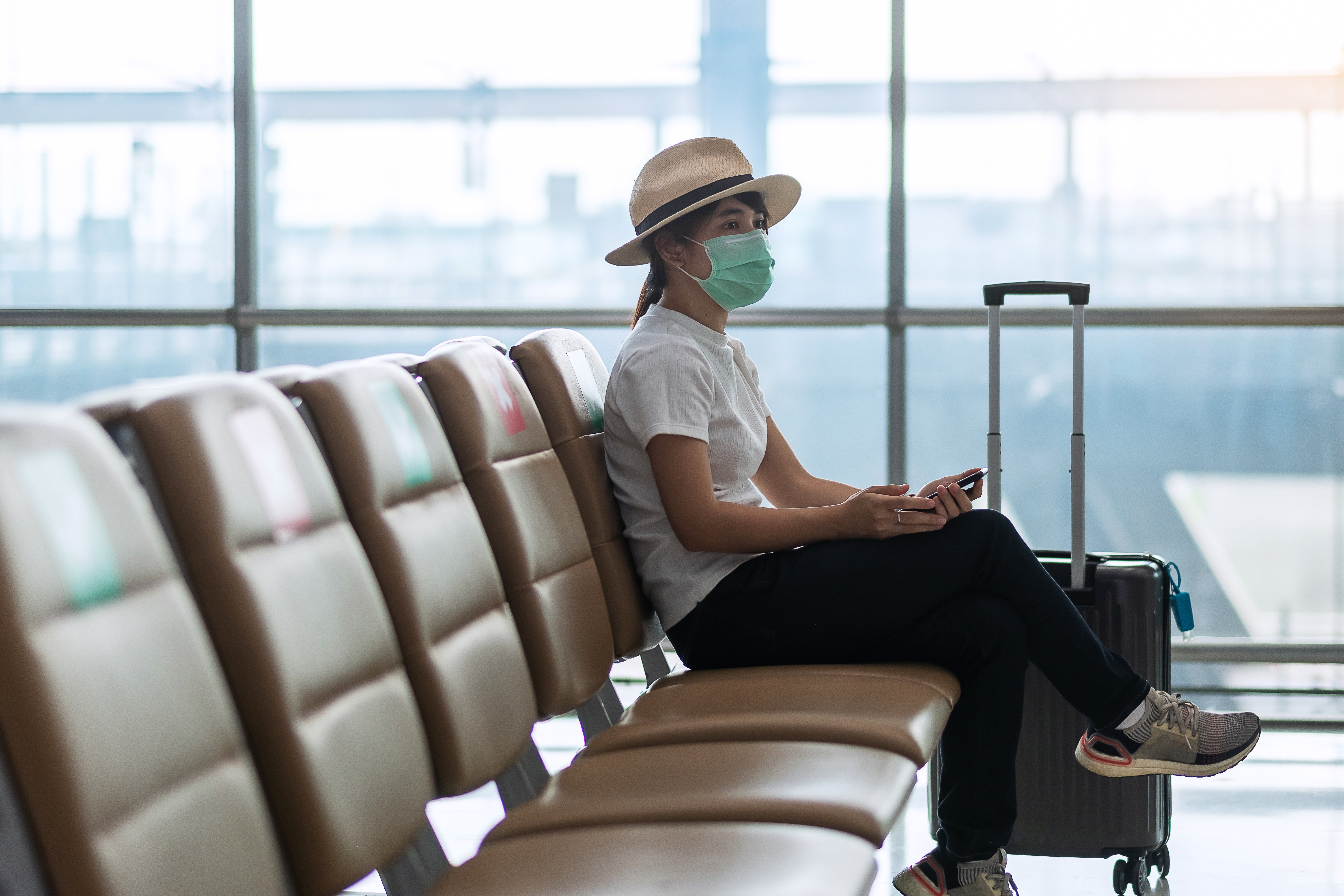
What you wear to the airport can make a bigger difference than you think—not just in how comfortable you feel, but in how smoothly you move through security. Avoid clothing and accessories that are likely to trigger metal detectors or cause delays, such as heavy jewelry, belts with large buckles, or jackets full of zippers and snaps. Shoes are another key factor: opt for slip-ons or sneakers without laces if you’re not enrolled in TSA PreCheck, as you’ll need to remove them during screening. Comfort is just as important as convenience. Choose breathable, moisture-wicking fabrics that allow you to stay comfortable whether you're sprinting through terminals or sitting for hours on a chilly plane. Soft, stretchy clothing like joggers, leggings, or travel-friendly pants offer both style and flexibility. Layers are a must—temperatures can swing wildly between your departure city, the plane cabin, and your destination. A large scarf or pashmina can double as a blanket, pillow, or even a makeshift privacy curtain. Compression socks are a travel essential, especially for long-haul flights. They improve circulation, reduce swelling in your feet and legs, and help prevent blood clots caused by prolonged sitting. Wrinkle-resistant fabrics also go a long way in keeping you looking put together after hours in transit. Bonus tip: Wear your bulkiest items—like boots or a thick jacket—on the plane to free up space in your luggage while keeping warm during the flight.
17. Pre-Select Your Seat Strategically
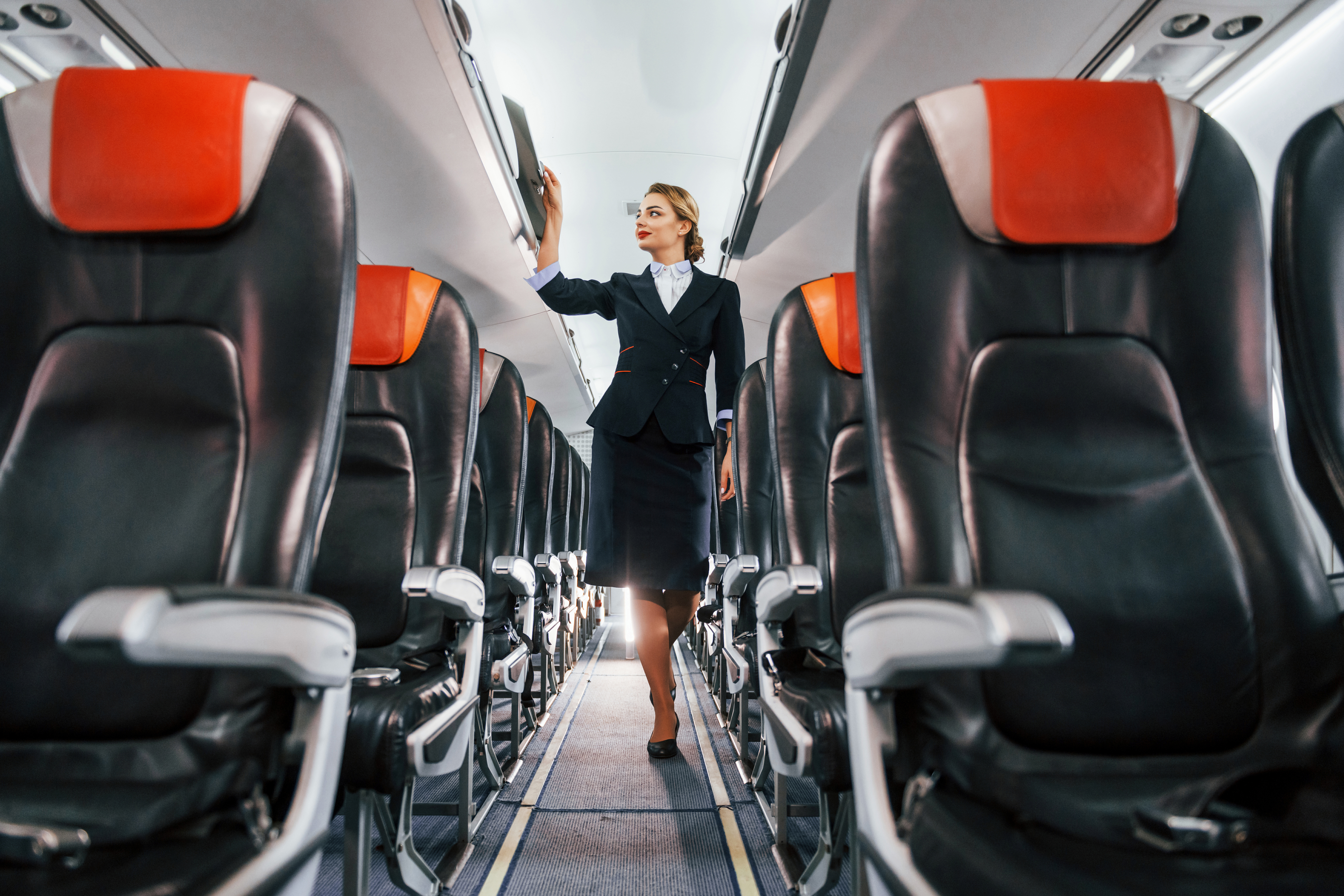
Your seat can significantly impact your comfort, convenience, and overall flight experience—especially on long-haul trips. Instead of accepting a random assignment, take a few minutes to research and select your seat in advance. Aisle seats are great for travelers who value freedom to move around or frequent bathroom access, while window seats are perfect for those who want to sleep undisturbed or enjoy aerial views. If you're tall or crave extra legroom, exit row and bulkhead seats are worth considering—just check the seat recline and tray table placement. To avoid surprises, use websites like SeatGuru to read reviews of specific seats on your aircraft. You’ll learn whether a seat doesn’t recline, is near a noisy galley, or has reduced storage space. Also, steer clear of seats directly next to bathrooms unless you don’t mind occasional odors or constant foot traffic. Many airlines allow seat selection at booking or check-in, often at no additional charge. If you’re flexible, check in as soon as the window opens—usually 24 hours before your flight—to snag better seat options. Bonus tip: If you're traveling solo and hoping for extra space, pick a window seat toward the rear of the plane. These are typically the last to fill, increasing your chances of an empty middle seat beside you.
18. Charge Devices Fully Before Leaving Home

Technology is your lifeline on travel days—your phone holds your boarding pass, navigation tools, entertainment, contact info, and emergency resources. That’s why it's critical to charge all your devices fully before you even leave the house. A fully charged phone or tablet can save you during delays, gate changes, or when your in-flight screen isn’t working. Yet many travelers forget this simple prep step and end up competing for outlets at the airport—only to find them all in use or broken. Start charging the night before your flight and top up again while getting ready. Don’t forget your accessories—smartwatches, headphones, Kindle, or camera batteries. Also, pack a fully charged portable power bank in your personal item; choose one with at least 10,000mAh capacity to get a full phone recharge or two. For longer trips or group travel, a multi-port USB charger or compact travel power strip can be a lifesaver in airports, hotels, or shared spaces. If you're heading overseas, check the voltage and plug type of your destination and bring a universal travel adapter with surge protection. Bonus tip: Store all your cables and charging accessories in a dedicated pouch so you’re not digging through your bag in a panic mid-flight.
19. Prepare Your In-Flight Entertainment in Advance

Let’s face it—airline entertainment systems are hit or miss. Some have a solid selection of movies and games; others are outdated or malfunction mid-flight. The smart move is to curate your own entertainment lineup before you leave. Download a mix of movies, TV shows, podcasts, audiobooks, and eBooks while you still have reliable Wi-Fi. If you’re a Netflix or Spotify user, make sure your apps are up to date and that everything you want is saved for offline access. Think variety: pack lighthearted content for easy viewing and something immersive to help the hours pass quickly. Don’t forget to include games or brain teasers, especially if you're traveling with kids or prone to boredom. Bring your own noise-canceling headphones for better sound quality and to drown out engine noise, crying babies, or chatty neighbors. Also bring a backup pair of wired headphones—some airlines still use two-prong jacks, and not all provide adapters. Bonus tip: Download a guided meditation or breathing app to help with anxiety, sleep, or in-flight relaxation. Apps like Calm or Headspace offer airplane-friendly options that don’t require Wi-Fi, helping you unwind while cruising at 35,000 feet.
20. Don’t Skip the Pre-Flight Stretch

Sitting for hours in a cramped airplane seat can wreak havoc on your body—causing stiffness, sore joints, and even circulation issues like swelling or deep vein thrombosis (DVT). That’s why a quick stretch session before boarding isn’t just nice—it’s necessary. You don’t need a yoga mat or workout gear—just a few dynamic movements to loosen up tight muscles and get your blood flowing. In your hotel room or airport terminal, do simple stretches like hamstring bends, calf raises, hip openers, and shoulder rolls. Lunges and gentle twists can help open your hips and spine, while neck rolls release tension caused by stress or screen time. Don’t be afraid to walk around the terminal instead of sitting at the gate for an hour—your body will thank you once you’re on board. Some airports even have dedicated yoga rooms or quiet spaces for stretching—check airport maps online in advance. Bonus tip: If you’re stuck in a crowded boarding area, find a quiet gate nearby to do a few discreet stretches or walk laps around the terminal to stay limber before takeoff.
21. Bring a Pen for Customs Forms

It’s one of those tiny travel details that makes a surprisingly big difference: bringing a pen. Many international flights still require you to fill out customs and immigration forms before landing, and despite all our tech advances, these forms are often paper-based. The problem? Flight attendants rarely have enough pens to go around—or they disappear midway through the cabin. If you don’t have your own, you’ll end up awkwardly waiting or borrowing from a neighbor while juggling a tray table and passport. Having your own pen means you can fill out forms at your own pace instead of rushing last-minute when the seatbelt sign turns on. It also helps you stay ahead in the customs line since you're not stopping to complete paperwork at the last second. Opt for a reliable ballpoint pen that won’t leak at high altitudes—cheap pens can explode due to cabin pressure changes. Bonus tip: Bring a second pen to lend to a fellow traveler. It’s a small gesture, but it often sparks conversation and makes you that rare helpful person on a flight—a true travel ally in the skies.
22. Use a Travel Wallet or Organizer

There’s nothing worse than fumbling through your backpack or tote bag while the boarding line behind you grows impatient. Keeping your essentials organized in one slim, dedicated pouch or travel wallet streamlines everything from check-in to customs to hotel check-in. It’s not just about holding your passport—it’s about easy access to everything you might need during transit. Look for a travel organizer that holds your passport, boarding pass, IDs, credit cards, currency, and even your SIM card or vaccination card. Some versions include space for a small pen, spare key, or digital tracking tile. RFID-blocking is a smart bonus, especially in crowded airports where electronic pickpocketing is more common. You’ll appreciate how much calmer and more prepared you feel when everything is right where you need it—no more digging through your bag while balancing your luggage or standing at the customs desk. Bonus tip: Stash an extra $20–$50 in a hidden pocket of your travel wallet in case of emergency. If your main wallet gets lost or stolen, having a backup stash of cash can be a real lifesaver.
23. Freshen Up Before You Land

After hours in recycled air, cramped seats, and inconsistent sleep, it’s totally normal to feel less than your freshest when the plane begins to descend. But with just a little preparation, you can land feeling (and smelling) like your best self—especially if you’re heading straight to a meeting, a romantic dinner, or a day of exploring. About an hour before landing, head to the restroom to freshen up. Brush your teeth or use a disposable mini toothbrush like a Colgate Wisp. Wipe your face and underarms with deodorant or body wipes, apply a light facial mist, and dab on some moisturizer to combat cabin dryness. Lip balm, hand cream, and a little hair touch-up go a long way too. If you wear makeup, a quick refresh or touch-up will help you feel instantly more polished. Bonus tip: Keep a mini “arrival kit” in a zip pouch in your personal item. Include wipes, a travel toothbrush, mini deodorant, face mist, lip balm, and a hair tie or comb. It’s one of those habits that transforms how you feel the moment you step off the plane.
24. Double-Check Gate Information at the Airport
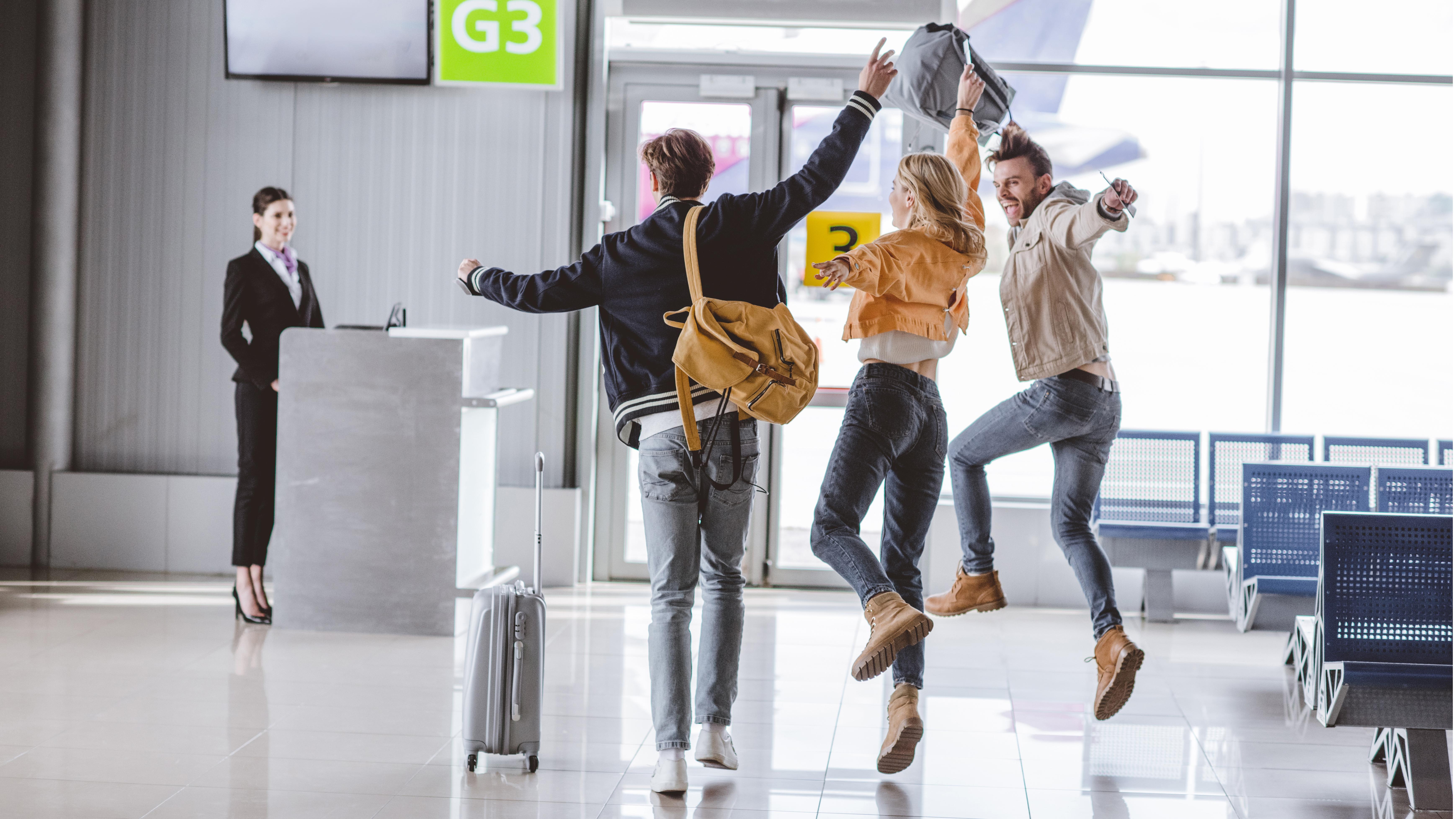
It’s a common travel pitfall: you get through security, find your gate, and settle in—only to realize too late that the gate has changed, sometimes to the other end of the terminal. Flight gates change often, especially in large or busy airports, and relying solely on the info you got at check-in—or even from the airline app—can leave you stranded at the wrong place. As soon as you clear security, check the departure boards for real-time gate updates. Then check again periodically, especially if your flight is delayed. If you have a long layover, resist the temptation to go into full relaxation mode without staying alert. Not all announcements are audible in every part of the terminal, and if you’re wearing headphones, it’s easy to miss critical info. Bonus tip: Set a push notification or flight alert through your airline’s app or use a third-party app like TripIt, FlightAware, or Flighty. These often update faster than airport screens—and can notify you of gate changes while you're grabbing a coffee or exploring the airport.
25. Have a Plan for Arrival—Not Just Departure
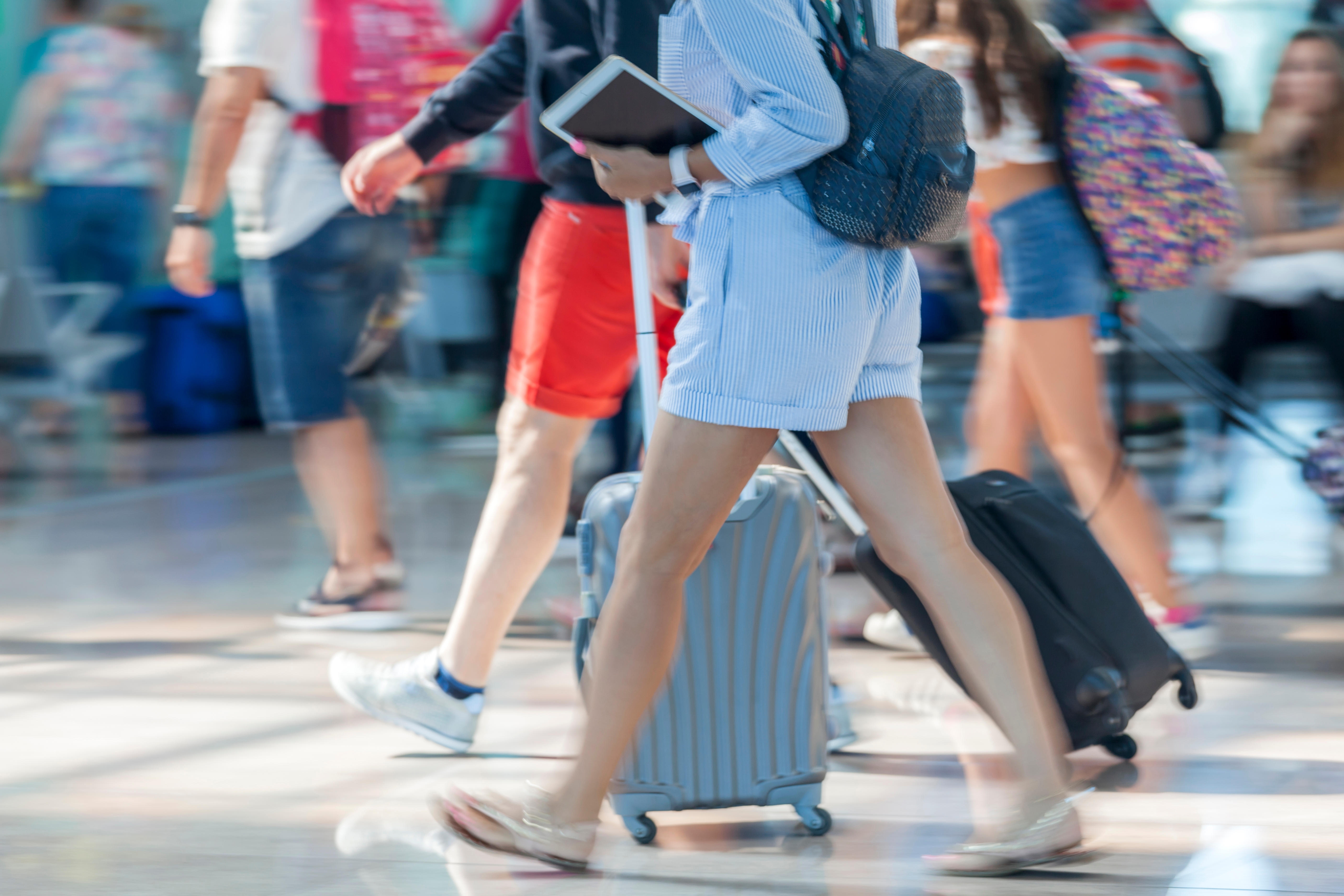
Most travelers put all their energy into getting on the flight—booking the tickets, packing, organizing airport logistics—but forget to plan for what happens when they land. The result? Post-flight confusion, exhaustion, and frustration as they try to figure out how to get from the airport to their hotel while jetlagged and hungry. Avoid that scramble by researching your destination’s arrival airport in advance. How long is the average customs wait? Are SIM cards or transit passes sold inside the terminal? Will you need cash for transport or tips right away? Check where baggage claim, ride-share pickups, and shuttle services are located. If using public transportation, figure out which line to take and where to get tickets. Also, consider the local time when you land. Are you arriving during rush hour or late at night when transport options are limited? Planning ahead lets you exit the airport with confidence instead of confusion. Bonus tip: Download your destination’s ride-share app (like Grab, Bolt, or Uber) or public transit app ahead of time. You can also pre-book airport transfers through your hotel or a reputable app. After a long flight, having a smooth transition to your next stop is a game-changer.
Your Stress-Free Flight Day Success
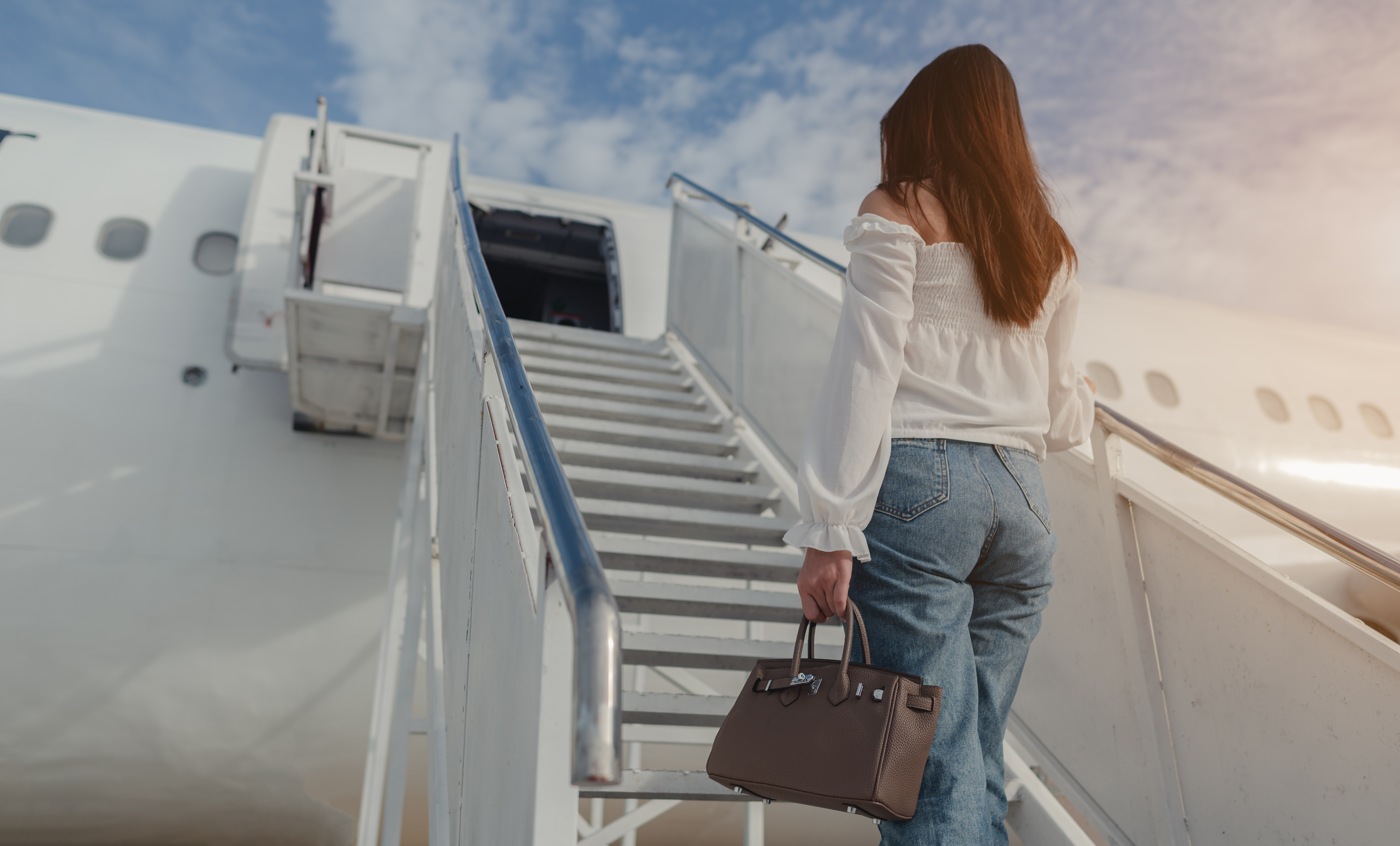
By following these 25 steps, you’ve set yourself up for the smoothest, most stress-free flight day possible. From smart packing and breezing through security to staying comfortable in-flight and adjusting to your destination, you’re now equipped with everything you need to travel like a pro. Sure, things might not always go exactly as planned, but with a little preparation and a flexible mindset, you can handle anything the travel gods throw your way. Remember, air travel is just as much about the journey as the destination—so embrace the adventure, soak in the views from above, and make the most of every moment. Whether you’re off on a dream vacation, a business trip, or visiting loved ones, your flight should be part of the excitement, not the stress. Safe travels, happy flying, and may your journey always be turbulence-free (in the air and on the ground)!








